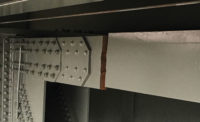The latest infrastructure “report card” from the American Society of Civil Engineers shows small improvements in the overall condition of America’s infrastructure.
The report card, released on March 19 in a digital format, showed that the state of infrastructure in six sectors,—drinking water, wastewater, solid waste, roads, bridges and rail—improved slightly. Those improvements brought the overall grade to a D+, up from a D four years ago.
The grades in 2013 range from a high of B- for solid-waste infrastructure to a low of D- for inland waterways and levees. None of the categories received a lower grade than in 2009.
Patrick Natale, ASCE executive director, told reporters, “The 2013 report card demonstrates that we can improve and modernize our nation’s infrastructure….Where investment was made and projects moved forward, we saw the grades rise.”
The investment needs for still are great, however, according to Natale. ASCE estimates the total infrastructure investment needs by 2020 at $3.6 trillion. “Even with the modest progress we’ve made in the past four years, their remains a significant—some would say staggering—$1.6-trillion gap between the needed investment level and the proposed funding,” he said.
To assign the grades, a committee of about 30 ASCE engineers reviewed existing data and consulted with industry and technical experts. The criteria they considered in each sector include infrastructure condition, funding, operations, public safety, innovation, resilience and the ability to meet demand.
The report card is in a digital format this year, with a corresponding phone app and website. The phone app makes the report “much more portable” and can reach a wider audience than the traditional paper copy, said Greg DiLoreto, ASCE’s 2013 president.
For the first time, the report card also includes information for all 50 states and highlights innovations that ASCE believes are making a difference. DiLoreto, who also is CEO of the Tualatin Valley Water District in Portland, Ore., said that for his district, raising rates has been key to fueling investment in water projects.






